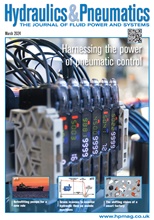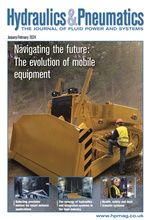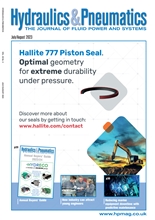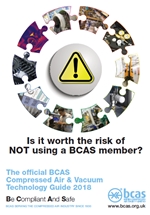Maximising eco efficiency
Dean Abbott, technical officer for the British Compressed Air Society (BCAS) brings us up to date on the Eco-design directive (2009/125/EC) – Lot 31 and argues for a sensible and achievable approach for compressed air manufacturers.
Work continues apace with the EU Eco-design directive (2009/125/EC), which outlines the general principles that OEMs must adopt to achieve energy efficient equipment designs across the EU.
For the compressor industry a consequence of this work was to initiate an Eco-design Preparatory study (ENER Lot 31). This has allowed discussions to take place between an EU appointed consultancy and the industry that is represented through the European body PNEUROP.
The idea behind this study was to provide the European Commission with a technical, environmental and economic analysis of the compressor industry.
What is covered?
The scope of the study covers rotary standard air compressor packages with a maximum flow rate of 5 to 1280 L/S and piston standard air compressor packages with a maximum flow rate of 2 to 64 L/S. To ensure that the report only considered commercial machines, it was also decided that the report would only cover those packages with a three phase electrical supply.
Taking a step back from all of this, we need to recognise that the whole reason for the Eco-design directive is the long term and continued reduction of energy costs throughout the EU and that stakeholders need to be able attain whatever is implemented.
With this in mind PNEUROP has considered the potential impact of the legislation and the impact of the potential regulated energy savings as far as the compressor industry is concerned.
As part of this process the organisation considered several different scenarios and how this would affect the objective of saving energy and its effect on OEMs.
The scenarios considered ranged from ‘Business as usual’ (BAU) which would yield potential total energy savings of up to 16 per cent by 2030, through to much more restrictive scenarios that would have a considerable impact if adopted and cause many a sleepless night across manufacturers’ boardrooms throughout Europe.
In practice it is recognised that a ‘business as usual’ approach is unlikely to be recognised, but equally legislation should not drive proposals that are unachievable by industry.
PNEUROP has now drafted its report responding to the Preparatory study (ENER Lot 31) and, after considering all of the various scenarios and given due consideration to the potential economic consequences of the regulation, it has recommended the adoption of ‘scenario 1’ as the preferred option.
This, the organisation argues is a fair solution. If accepted it could mean that 22-27 per cent of current compressors currently available for sale in the EU would have to be withdrawn by 2018, rising to 40-45 per cent of compressors by 2020.
-
Smart Manufacturing & Engineering Week
05 - 06 June, 2024
NEC, Birmingham -
HILLHEAD 2024
25 June, 2024, 9:00 - 27 June, 2024, 16:00
Hillhead Quarry, Buxton, Derbyshire UK










